Busting PAR Measurement Myths: The Hidden Spectrum of Reef Par
Welcome to another enlightening episode of Red Sea Insights, where today we’re diving deep into the world of reef lighting, specifically focusing on the often misunderstood concept of PAR measurements and the hidden spectrum that truly matters for our corals. Understanding Reef Par is crucial for any aquarist aiming to optimise coral health and growth.
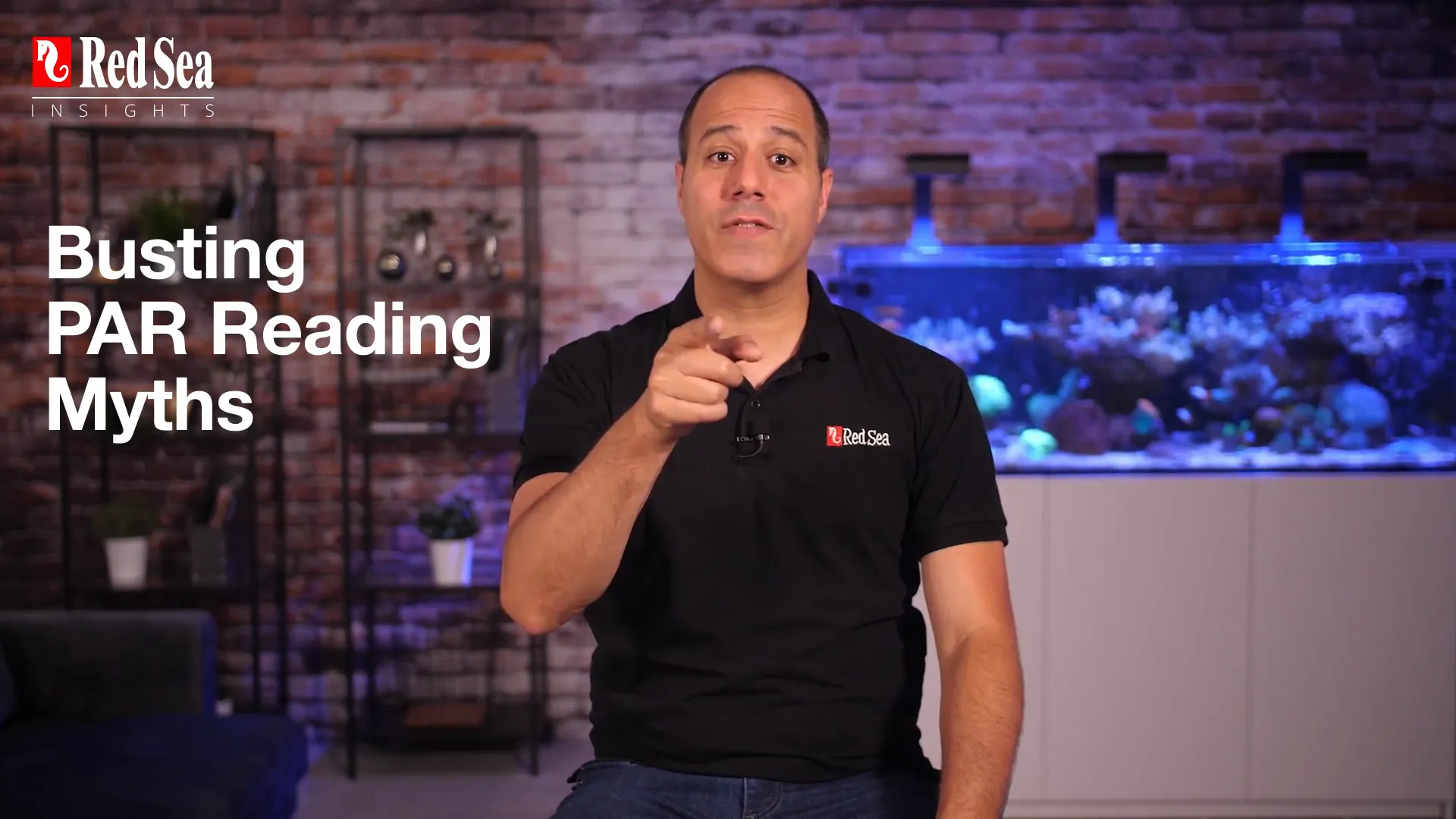
Table of Contents
- Understanding PAR and Its Limitations
- The Spectrum That Matters: PUR
- Why PUR Is Essential for Reef Par
- Bottom Line: The Future of Reef Lighting
- FAQ
Understanding PAR and Its Limitations
PAR, or Photosynthetic Active Radiation, is a term we throw around quite a bit in the reef-keeping community. But what does it really mean, and is it telling us everything we need to know about light suitability for corals?
PAR measures the intensity of light within the visible spectrum, ranging from 400 to 700 nanometers. This measurement was originally developed for terrestrial photobiology, focusing primarily on plants and crops. However, the spectrum relevant to corals actually begins below 400 nanometers in the UV region and continues into the blue part of the visible light range, specifically between 360 to 480 nanometers. This range is known as Photosynthetic Utilized Radiation, or PUR.
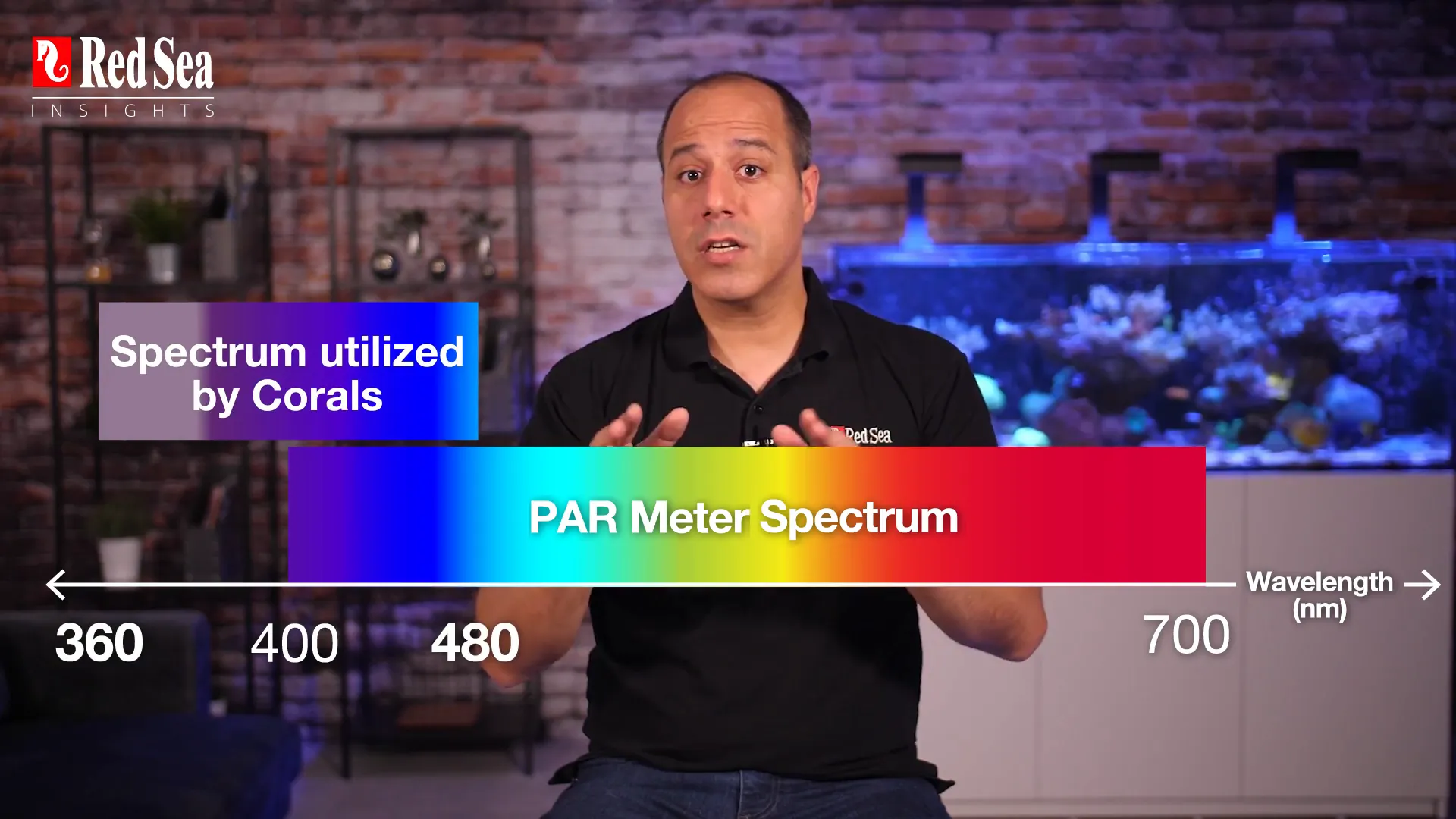
The Spectrum That Matters: PUR
While PAR gives us a general idea of light intensity, it misses crucial parts of the spectrum that are vital for coral health. The wavelengths below 400 nanometers, found in the UV range, play a significant role in enhancing coral growth, boosting colour expression, and stimulating photosynthesis recovery processes. On the flip side, wavelengths above 480 nanometers, which include green, yellow, and red light, are not utilized by corals and can even cause stress and photoinhibition when present in excess.
Interestingly, while zooxanthellae, the symbiotic algae living in coral tissues, can use red light, they don’t require it. In fact, excessive red light can damage corals before the zooxanthellae have a chance to utilize it. Our research indicates that avoiding these wavelengths is more beneficial for coral well-being.
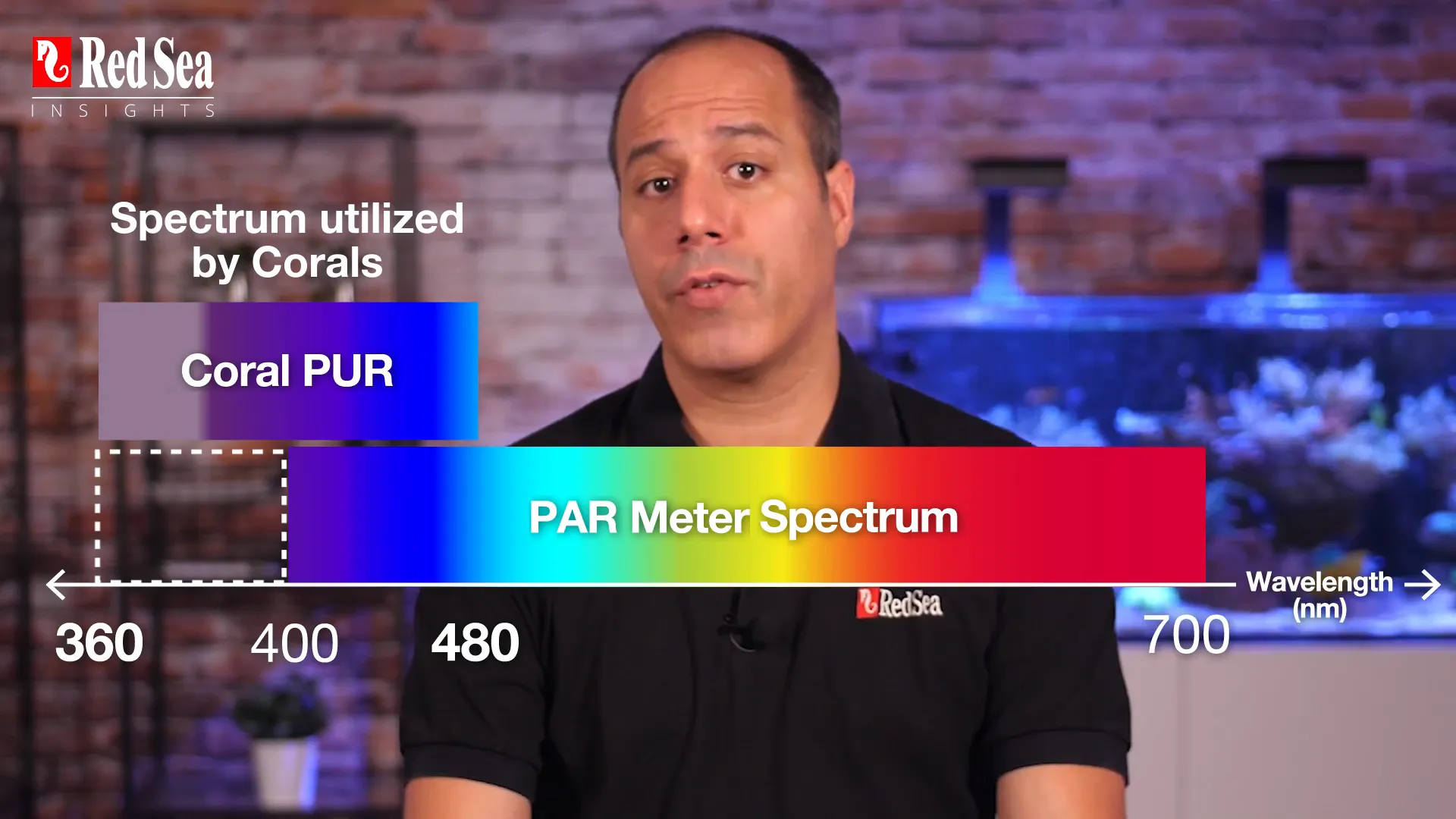
Why PUR Is Essential for Reef Par
To accurately assess the suitability of a light source for a reef aquarium, focusing on PUR is essential. Unfortunately, there are no dedicated coral PUR meters available. Instead, we rely on devices like the OceanOptics radio spectrophotometer to measure the specific spectral irradiance of each wavelength. This allows us to determine the percentage of PUR from a standard PAR reading.
When choosing lighting for your aquarium, it’s crucial to consider the PUR percentage to ensure your corals receive the most beneficial light. This understanding can help you make informed decisions about lighting options, such as the Red Sea ReefLED 160s, which is designed to optimize lighting for deeper, wider tanks.
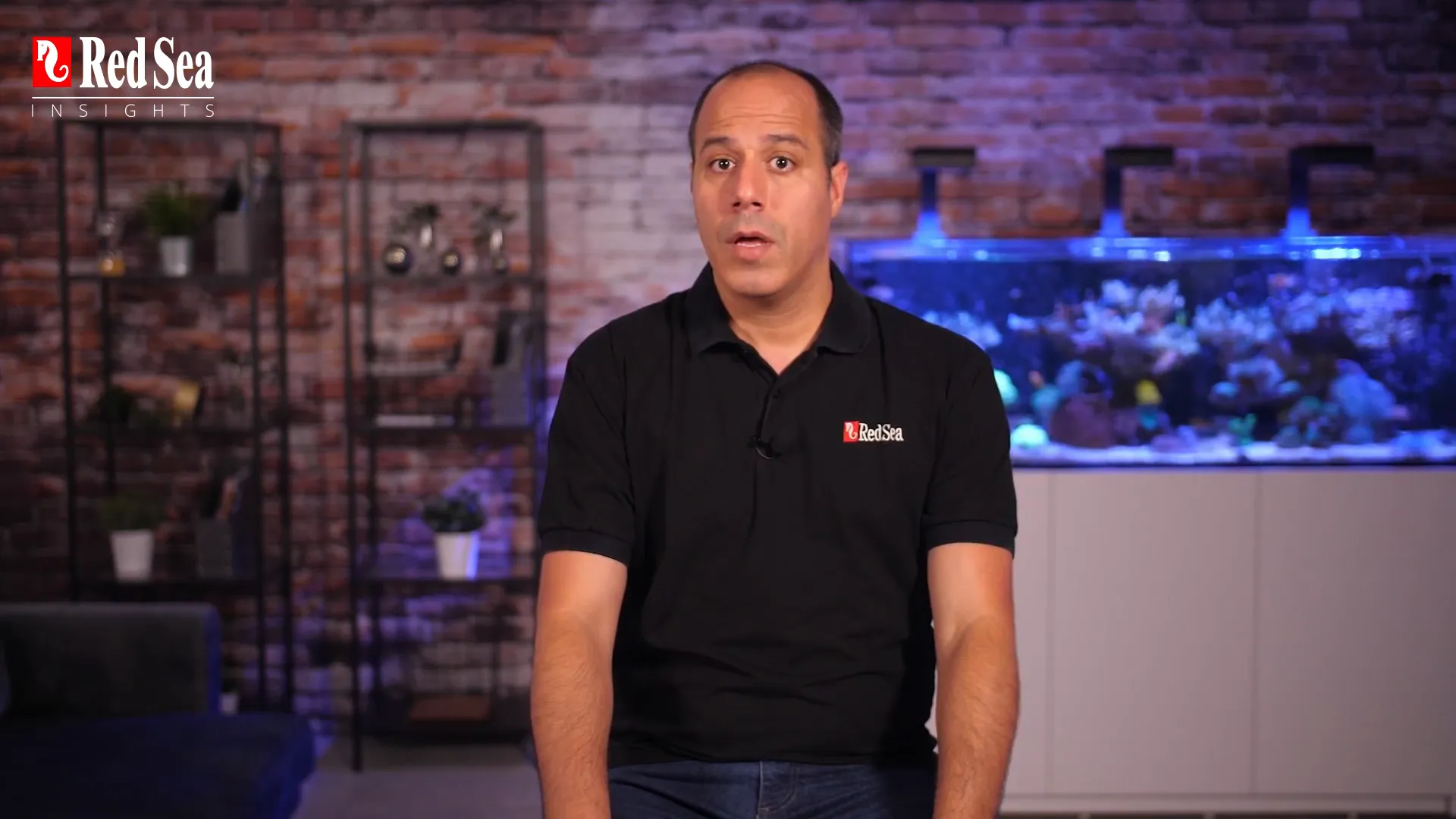
Bottom Line: The Future of Reef Lighting
In summary, while PAR provides a measure of light intensity, it doesn’t fully capture what’s necessary for coral health in a reef aquarium. PUR, on the other hand, gives us the precise information needed to ensure optimal growth and vitality of corals. As we continue to explore the intricacies of reef lighting, understanding the importance of PUR over PAR will be key to successful reef-keeping.
Stay tuned for our next episode, where we will delve into the dynamics of light versus dark periods and their relationship with spectrum intensity and photoperiod. Meanwhile, feel free to reach out with any questions or suggestions in the comments section below.
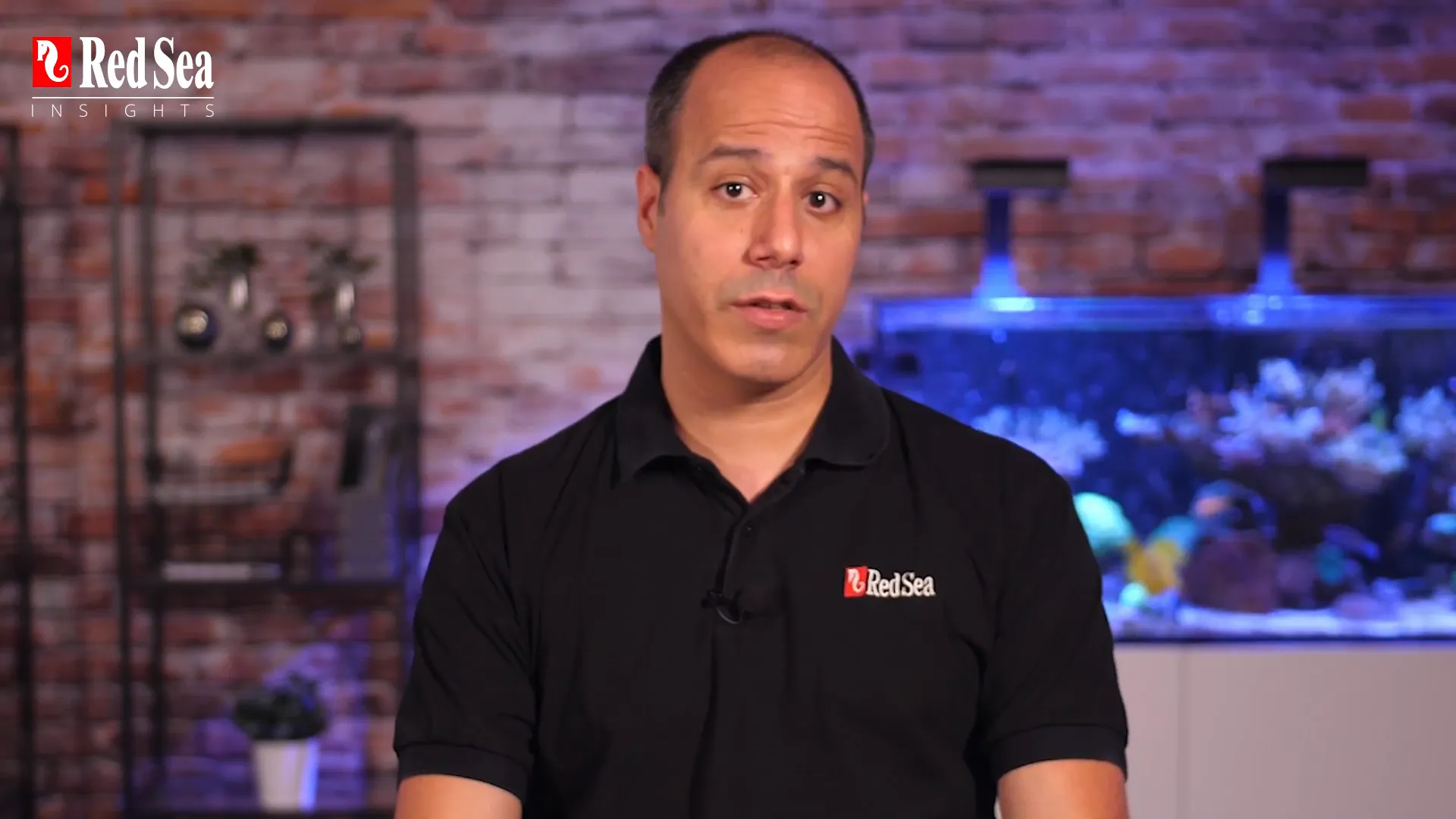
FAQ
- What is the difference between PAR and PUR? PAR measures the intensity of the visible light spectrum, while PUR focuses on the specific wavelengths used by corals for photosynthesis.
- Why is PUR more important than PAR for corals? PUR includes the wavelengths that directly enhance coral growth and health, while PAR includes wavelengths that can be harmful in excess.
- How can I measure PUR in my aquarium? While there are no specific PUR meters, using a device like a spectrophotometer can help determine the PUR percentage from a PAR reading.
- What lighting options are recommended for optimizing PUR? Consider lighting options like the Red Sea ReefLED 160s which are designed to provide optimal lighting for coral health.

























